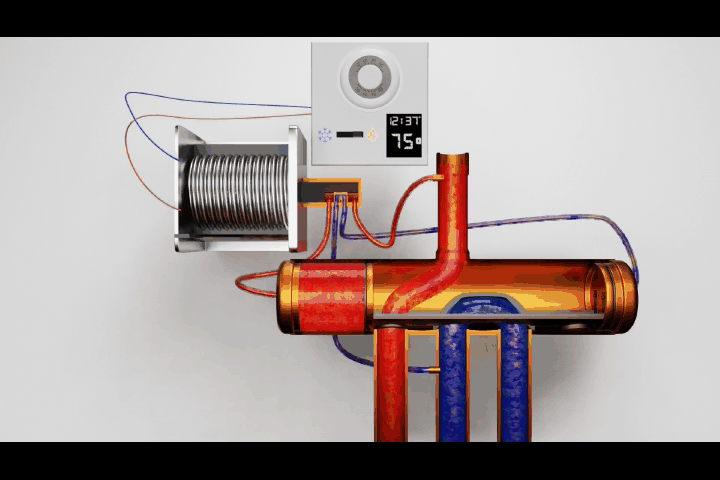Get Tech Tips
Subscribe to free tech tips.
Control Voltage Overamp – The Less Usual Cause

In many cases when a low-voltage or control circuit blows a fuse, it's because one of the circuits is shorted to ground or common. That may happen because of rubbed-out wires, shorted components or boards, etc. Routing wires sensibly and using proper grommets to avoid rubouts and shorts will help prevent those problems.
Less commonly, you will see the low-voltage circuit draw high amperage. That may happen because a magnetic solenoid is energized but the mechanical pin, stem, or armature is stuck.
A common example is a stuck-open contactor. That condition results in high amperage because the solenoid is energized without the magnetic resistance (reactance) provided by the induced magnetic field.
Another example is a reversing valve solenoid that is improperly mounted on the reversing valve stem. As you can see below, the reversing valve solenoid responds to the low-voltage signal from the thermostat and acts as a smaller reversing valve; that's what ultimately causes the reversing valve to shift. You can see the same effect in any magnetic switchgear, such as relays, pump-down solenoids, etc.

What's happening?
Problems like the ones I just mentioned occur because the magnetic field in the coil isn't reacting with the load; there isn't enough inductive resistance (“inductive reactance“). It's essentially the same thing as locked rotor amps on a motor. If you keep a motor from spinning, the electrical resistance in the windings remains too low. So, the windings overheat and go out on thermal overload.
When that happens in low voltage circuits, it often won't blow a fuse or trip right away. A good way to catch it is to put an amp clamp on the low-voltage wires feeding different components. Keep doing that until you find the one pulling very high amperage compared to the other low-voltage components.
So, check for short circuits first; make sure that's under control when you have overamp conditions in the low-voltage circuit. But you'll still want to keep your eyes open for stuck or improperly mounted solenoids.
—Bryan











Comments
So what ur saying is the check amp draw of those components? Ive never been infront of a low voltage short before.
So what ur saying is the check amp draw of those components? Ive never been infront of a low voltage short before.
To leave a comment, you need to log in.
Log In